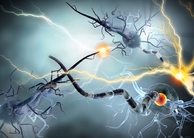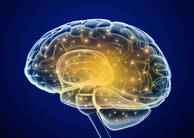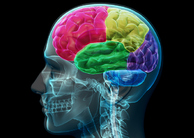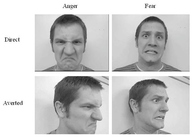|
The Role of Antisocial Personality Disorder and Antisocial Behavior in Crime
ASPD children are at high risk of committing criminal acts in adolescence and adulthood. Loeber et al. suggested that early onset of ASPD may promote chronic forms of violent behaviour in 35-75% of cases.13
The development and outcome of ASPD is influenced by neurobiological (E.g. neurotransmitter imbalance), environmental (E.g. harsh parental discipline), and social (E.g. lack of personal relationships) factors.13 18 22 The onset of ASPD in toddlers or children is often the result of a disturbed temperament and a substandard environment. An introverted or difficult child who is raised in harsh circumstances, for instance, is at risk of developing ASPD.
Interestingly, Lynam and Robins showed that antisocial children are not destined to become antisocial adolescents or antisocial adults. 15 27 The maintenance of ASPD is influenced by numerous biological factors, including neurotransmitter (E.g. serotonin) and hormone (E.g. testosterone and cortisol) levels (discussed above).
Criminological evidence has found that antisocial and aggressive behaviour is highly prevalent in males. Indeed, prevalence of ASPD in males is 3%.2 In contrast, few females exhibit antisocial and aggressive behaviour. Consequently, prevalence of ASPD in females is 1%.2 ASPD in male offenders is often associated with “Cluster B” personality traits, including a blatant disregard for the emotions of others, an inability to experience guilt, consistent irritability, and a low tolerance for frustration.2 In contrast, ASPD in female offenders is commonly associated with “Cluster A” personality traits, including irresponsible behaviour, impulsivity, high rates of childhood abuse, and aggression.2 20
Additionally, ASPD in female offenders is often associated with high rates of unemployment, marital separation, substance abuse, depression, and suicidal behaviour.2 20 Scientific evidence has attributed gender differences in antisocial and aggressive behaviours to varying levels of gonadal hormones (namely testosterone) in male and female offenders.11 A population-based study by Hines et al. reported a positive association between concentrations of maternal testosterone (measured in blood samples of pregnant women) and antisocial and/or aggressive behaviour in 3.5 year-old female children.11 However, the neurobiological mechanism that underlies gender differences in antisocial and aggressive behaviours is poorly understood. Hence, further research is required.
Cognitive behavioural therapy (CBT) is often used to treat ASPD sufferers. CBT is a psychotherapeutic treatment that addresses cognitive processes and maladaptive behaviours through goal-oriented procedures. ASPD patients are encouraged to recognize negative or violent thought processes (E.g. suicidal or homicidal urges) and assess their validity.17 Furthermore, ASPD sufferers are taught to replace dysfunctional ideas with healthier ideas. CBT involves two tasks.
In cognitive restructuring, the therapist and the ASPD patient evaluate antisocial tendencies and discuss possible strategies for improvement. In behavioural activation, patients are encouraged to overcome behavioural obstacles by completing take-home reflections and activities (called “homework”).17 A study conducted by Davidson et al. evaluated the effectiveness of CBT for ASPD sufferers. ASPD patients were randomly assigned to a CBT-treatment group and a TAU-treatment group. Patients in the CBT-treatment group showed lower levels of physical aggression and antisocial behaviour after 6 months of training.17
Schema-based therapy may be used to treat ASPD patients.22 Developed by Dr. Jeffery Young, schema-based therapy is a psychotherapeutic treatment that integrates elements of cognitive therapy, object relations, attachment theory, gestalt therapy, and behavioural therapy.22 According to schema-based therapy, “schemas” or “life traps” are self-defeating thought patterns that are established in childhood. Schemas may be altered using “coping styles” (E.g. schema maintenance, schema avoidance, and schema compensation). Schema-based therapy involves three tasks.17 Firstly, schemas are identified using questionnaires. Secondly, ASPD patients are taught to recognize schemas in daily life. Finally, ASPD patients are encouraged to replace negative schemas with positive thought processes.17 A 2004 study by Ben-Porath et al. investigated the effectiveness of schema-based therapy for ASPD sufferers. Patients showed improvements in social functioning after 18-36 months of training.17
- Amen, D.G., Stubblefield, M., & Carmichael, B. (1996). Brain SPECT Findings and Agressiveness. Annals of Clinical Psychiatry, 8, 129–137.
- American Psychiatric Association (2000). Diagnostic and Statistical Manual of Mental Disorders (4th ed.; text revision). Washington, DC: Author.
- Blair, R.J.R. (1995). A Cognitive Developmental Approach to Morality: Investigating the Psychopath. Cognition, 57, 1–29.
- Blair, R.J.R. et al. (2001). A Selective Impairment in the Processing of Sad and Fearful Expressions in Children with Psychopathic Tendencies. J. Abnorm. Child Psycho, 29, 491–498.
- Booth, A., Johnson, D.R., Granger, D.A., Crouter, A.C., & McHale., S., (2003). Testosterone and Child and Adolescent Adjustment: the Moderating Role of Parent–Child Relationships. Developmental Psychology, 39, 85–98.
- Brennan, P.A., Rain, A., Schulsinger, F., & et al., (1997). Psychophysiological Protective Factors for Male Subjects at High Risk for Criminal Behavior. American Journal of Psychiatry, 154, 853–855.
- Coccaro, E.F., Siever, L.J., Klar, H.M., Maurer, G., Cochrane, K., Cooper, T.B., Mohs, R.C., & Davis, K.L. (1989). Serotonergic Studies in Patients with Affective and Personality Disorders: Correlates with Suicidal and Impulsive Aggressive Behavior. Archives of General Psychiatry;46, 587–599.
- Fang, C.Y., Egleston, B.L., Brown, K.M., Lavigne, J.V., Stevens, V.J., Barton, B.A., Chandler, D.W., & Dorgan, J.F., (2009). Family Cohesion Moderates the Relation between Free Testosterone and Delinquent Behaviors in Adolescent Boys and Girls. Journal of Adolescent Health, 44, 590–597.
- Granger, D.A., Shirtcliff, E.A., Zahn-Waxler, C., Usher, B., Klimes-Dougan, B., & Hastings, P., (2003). Salivary Testosterone Diurnal Variation and Psychopatholgy in Adolescent Males and Females: Individual Differences and Developmental Effects. Development and Psychopathology, 15, 431–449.
- Haller, J., Halász, J., Mikics, E., & Kruk, M.R., (2004). Chronic Glucocorticoid Deficiency-Induced Abnormal Aggression, Autonomic Hypoarousal, and Social Deficit in Rats. Journal of Neuroendocrinology, 16, 550–557.
- Hines, M., (2004). Brain Gender. Oxford University Press.
- Lidberg, L., Tuck, J.R., Asberg, M., Scalia-Tomba, G.P., & Bertilsson, L., (1985). Homicide, Suicide and CSF 5-HIAA. Acta Psychiatrica Scandinavica, 71, 230–236.
- Loeber, R., & Hay, D.F., (1997). Key Issues in the Development of Aggression and Violence From Childhood to Early Adulthood. Annual Review of Psychology, 48, 371–410.
- Luo, Q. et al. (2006). The Neural Basis of Implicit Moral Attitude – an IAT Study Using Event-Related fMRI. Neuroimage, 30, 1449–1457
- Lynam, D.R., (1996). Identification of Early Offenders: Who is the Fledgling Psychopath?. Psychological Bulletin, 120, 209–234.
- Maras, A., Laucht, M., Gerdes, D., Wilhelm, C., Lewicka, S., Haack, D., Malisova, L., & Schmidt, M.H., (2003). Association of Testosterone and Dihydrotestosterone With Externalizing Behavior in Adolescent Boys and Girls. Psychoneuroendo- crinology, 28, 932–940.
- Matusiewicz, A.K., Hopwood, C.J., Banducci, A.N., & Lejuez, C.W. (2010). The Effectiveness of Cognitive Behavioral Therapy for Personality Disorders. Psychiatr Clin North Am., 33.3, 657-685.
- Mendez, M.F. (2009). The Neurobiology of Moral Behaviour: Review and Neuropsychiatric Implications. CNS Spectrums, 14(11), 608-620.
- Moore, T., Scarpa, A., & Raine, A. (2002). A Meta-Analysis of Serotonin Metabolite 5-HIAA and Antisocial Behavior. Aggressive Behavior, 28, 299–316.
- Mulder, R. T., Wells, J. E., & Bushnell, J. A. (1994). Antisocial Women. Journal of Personality Disorders, 8, 279−287.
- Muller, J.L., S. Gänssbauer, M. Sommer, L. Dohnel, T. Weber, et al. (2008). Gray Matter Changes in Right Superior Temporal Gyrus in Criminal Psychopaths: Evidence From Voxel-Based Morphometry. Psychiatry Res. 163(3): 213-22.
- Nolen-Hoeksema, S., et. al. (2008). Abnormal Psychology (4th Ed.). New York: McGraw-Hill.
- Pietrini, P., Guazzelli, M., Basso, G., Jaffe, K., & Grafman, J. (2000). Neural Correlates of Imaginal Aggressive Behaviour Assessed by Positron Emission Tomography In Healthy Subjects. American Journal of Psychiatry, 11, 1772–1781.
- Raine, A., Venables, P.H., & Mednick, S.A., (1997). Low Resting Heart Rate At Age 3 Years Predisposes to Aggression at Age 11 Years: Evidence From the Mauritius Child Health Project. Journal of the American Academy of Child and Adolescent Psychiatry, 36, 1457–1464.
- Raine, A., Lencz, T., Bihrle, S., LaCasse, L., & Colletti, P. (2000). Reduced Prefrontal Gray Matter Volume and Reduced Autonomic Activity in Antisocial Personality Disorder. Archives of General Psychiatry, 57,119–29.
- Raine, A., Lee, L., Yang, Y., & Colletti, P. (2010). Neurodevelopmental Marker for Limbic Maldevelopment in Antisocial Personality Disorder and Psychopathy.The British Journal of Psychiatry,197, 186–192.
- Robins, L.N., (1966). Deviant Children Grown Up. Williams and Wilkins, Baltimore, MD.
- Spoont, M.R., (1992). Modulatory Role of Serotonin in Neural Information Processing: Implications for Human Psychopathology. Psychological Bulletin 112, 330–350.
- Tarter, R.E., Kirisci, L., Gavaler, J.S., Reynolds, M., Kirillova, G., Clark, D.B., Wu, J., Moss, H.B., & Vanyukov, M., (2009). Prospective Study of the Association between Abandoned Dwellings and Testosterone Level on the Development of Behaviors Leading to Cannabis Use Disorder in Boys. Biological Psychiatry, 65(2), 116–121.
- Traskman-Bendz, L., Asberg, M., Schalling, D. (1986).Serotonergic Function and Suicidal Behavior in Personality Disorders. Abdominal Aortic Aneurysm: Genetics, Pathophysiology, and Molecular; 487, 168–74.
- Van Goozen, S.H.M., Matthys, W., Cohen-Kettenis, P.T., Buitelaar, J.K., Van Engeland, H., (2000). Hypothalamic–Pituitary–Adrenal Axis and Autonomic Nervous Systemactivity in Disruptive Children and Matched Controls. Journal of the American Academy of Child and Adolescent Psychiatry, 39, 1438–1445.
- Virkkunen, M., Nuutila, A., Goodwin, F.K., Linnoila, M., (1987). Cerebrospinal Fluid Monoamine Metabolites in Male Arsonists. Archives of General Psychiatry, 44, 241–247.
- Virkkunen, M., Rawlings, R., Tokola, R., Poland, R.E., Guidotti, A., Nemeroff, C.B., Bissette, G., Kalogeras, K., Karonen, S.L., Linnoila, M. (1994). CSF Biochemistries, Glucose Metabolism, and Diurnal Activity Rhythms in Alcoholic, Violent Offenders, Fire Setters, and Healthy Volunteers. Archives of General Psychiatry, 51, 20–27.
- Warren, J. I., & South, S. C. (2006). Comparing the Constructs of Antisocial Personality Disorder and Psychopathy in a Sample of Incarcerated Women. Behavioral Sciences and the Law, 24, 1−20.
- Wu, D., Zhao, Y., Liao, J., Yin, H., & Wang, W. (2011). White Matter Abnormalities in Young Males with Antisocial Personality Disorder: Evidence from Voxel-Based Morphometry-Diffeomorphic Anatomical Registration Using Exponentiated Lie Algebra Analysis.Neural Regen Res,6(25), 1965-1970.
Endnotes
- Amen, D.G., Stubblefield, M., & Carmichael, B. (1996). Brain SPECT Findings and Agressiveness. Annals of Clinical Psychiatry, 8, 129–137.
- American Psychiatric Association (2000). Diagnostic and Statistical Manual of Mental Disorders (4th ed.; text revision). Washington, DC: Author.
- Blair, R.J.R. (1995). A Cognitive Developmental Approach to Morality: Investigating the Psychopath. Cognition, 57, 1–29.
- Blair, R.J.R. et al. (2001). A Selective Impairment in the Processing of Sad and Fearful Expressions in Children with Psychopathic Tendencies. J. Abnorm. Child Psycho, 29, 491–498.
- Booth, A., Johnson, D.R., Granger, D.A., Crouter, A.C., & McHale., S., (2003). Testosterone and Child and Adolescent Adjustment: the Moderating Role of Parent–Child Relationships. Developmental Psychology, 39, 85–98.
- Brennan, P.A., Rain, A., Schulsinger, F., & et al., (1997). Psychophysiological Protective Factors for Male Subjects at High Risk for Criminal Behavior. American Journal of Psychiatry, 154, 853–855.
- Coccaro, E.F., Siever, L.J., Klar, H.M., Maurer, G., Cochrane, K., Cooper, T.B., Mohs, R.C., & Davis, K.L. (1989). Serotonergic Studies in Patients with Affective and Personality Disorders: Correlates with Suicidal and Impulsive Aggressive Behavior. Archives of General Psychiatry;46, 587–599.
- Fang, C.Y., Egleston, B.L., Brown, K.M., Lavigne, J.V., Stevens, V.J., Barton, B.A., Chandler, D.W., & Dorgan, J.F., (2009). Family Cohesion Moderates the Relation between Free Testosterone and Delinquent Behaviors in Adolescent Boys and Girls. Journal of Adolescent Health, 44, 590–597.
- Granger, D.A., Shirtcliff, E.A., Zahn-Waxler, C., Usher, B., Klimes-Dougan, B., & Hastings, P., (2003). Salivary Testosterone Diurnal Variation and Psychopatholgy in Adolescent Males and Females: Individual Differences and Developmental Effects. Development and Psychopathology, 15, 431–449.
- Haller, J., Halász, J., Mikics, E., & Kruk, M.R., (2004). Chronic Glucocorticoid Deficiency-Induced Abnormal Aggression, Autonomic Hypoarousal, and Social Deficit in Rats. Journal of Neuroendocrinology, 16, 550–557.
- Hines, M., (2004). Brain Gender. Oxford University Press.
- Lidberg, L., Tuck, J.R., Asberg, M., Scalia-Tomba, G.P., & Bertilsson, L., (1985). Homicide, Suicide and CSF 5-HIAA. Acta Psychiatrica Scandinavica, 71, 230–236.
- Loeber, R., & Hay, D.F., (1997). Key Issues in the Development of Aggression and Violence From Childhood to Early Adulthood. Annual Review of Psychology, 48, 371–410.
- Luo, Q. et al. (2006). The Neural Basis of Implicit Moral Attitude – an IAT Study Using Event-Related fMRI. Neuroimage, 30, 1449–1457
- Lynam, D.R., (1996). Identification of Early Offenders: Who is the Fledgling Psychopath?. Psychological Bulletin, 120, 209–234.
- Maras, A., Laucht, M., Gerdes, D., Wilhelm, C., Lewicka, S., Haack, D., Malisova, L., & Schmidt, M.H., (2003). Association of Testosterone and Dihydrotestosterone With Externalizing Behavior in Adolescent Boys and Girls. Psychoneuroendo- crinology, 28, 932–940.
- Matusiewicz, A.K., Hopwood, C.J., Banducci, A.N., & Lejuez, C.W. (2010). The Effectiveness of Cognitive Behavioral Therapy for Personality Disorders. Psychiatr Clin North Am., 33.3, 657-685.
- Mendez, M.F. (2009). The Neurobiology of Moral Behaviour: Review and Neuropsychiatric Implications. CNS Spectrums, 14(11), 608-620.
- Moore, T., Scarpa, A., & Raine, A. (2002). A Meta-Analysis of Serotonin Metabolite 5-HIAA and Antisocial Behavior. Aggressive Behavior, 28, 299–316.
- Mulder, R. T., Wells, J. E., & Bushnell, J. A. (1994). Antisocial Women. Journal of Personality Disorders, 8, 279−287.
- Muller, J.L., S. Gänssbauer, M. Sommer, L. Dohnel, T. Weber, et al. (2008). Gray Matter Changes in Right Superior Temporal Gyrus in Criminal Psychopaths: Evidence From Voxel-Based Morphometry. Psychiatry Res. 163(3): 213-22.
- Nolen-Hoeksema, S., et. al. (2008). Abnormal Psychology (4th Ed.). New York: McGraw-Hill.
- Pietrini, P., Guazzelli, M., Basso, G., Jaffe, K., & Grafman, J. (2000). Neural Correlates of Imaginal Aggressive Behaviour Assessed by Positron Emission Tomography In Healthy Subjects. American Journal of Psychiatry, 11, 1772–1781.
- Raine, A., Venables, P.H., & Mednick, S.A., (1997). Low Resting Heart Rate At Age 3 Years Predisposes to Aggression at Age 11 Years: Evidence From the Mauritius Child Health Project. Journal of the American Academy of Child and Adolescent Psychiatry, 36, 1457–1464.
- Raine, A., Lencz, T., Bihrle, S., LaCasse, L., & Colletti, P. (2000). Reduced Prefrontal Gray Matter Volume and Reduced Autonomic Activity in Antisocial Personality Disorder. Archives of General Psychiatry, 57,119–29.
- Raine, A., Lee, L., Yang, Y., & Colletti, P. (2010). Neurodevelopmental Marker for Limbic Maldevelopment in Antisocial Personality Disorder and Psychopathy.The British Journal of Psychiatry,197, 186–192.
- Robins, L.N., (1966). Deviant Children Grown Up. Williams and Wilkins, Baltimore, MD.
- Spoont, M.R., (1992). Modulatory Role of Serotonin in Neural Information Processing: Implications for Human Psychopathology. Psychological Bulletin 112, 330–350.
- Tarter, R.E., Kirisci, L., Gavaler, J.S., Reynolds, M., Kirillova, G., Clark, D.B., Wu, J., Moss, H.B., & Vanyukov, M., (2009). Prospective Study of the Association between Abandoned Dwellings and Testosterone Level on the Development of Behaviors Leading to Cannabis Use Disorder in Boys. Biological Psychiatry, 65(2), 116–121.
- Traskman-Bendz, L., Asberg, M., Schalling, D. (1986).Serotonergic Function and Suicidal Behavior in Personality Disorders. Abdominal Aortic Aneurysm: Genetics, Pathophysiology, and Molecular; 487, 168–74.
- Van Goozen, S.H.M., Matthys, W., Cohen-Kettenis, P.T., Buitelaar, J.K., Van Engeland, H., (2000). Hypothalamic–Pituitary–Adrenal Axis and Autonomic Nervous Systemactivity in Disruptive Children and Matched Controls. Journal of the American Academy of Child and Adolescent Psychiatry, 39, 1438–1445.
- Virkkunen, M., Nuutila, A., Goodwin, F.K., Linnoila, M., (1987). Cerebrospinal Fluid Monoamine Metabolites in Male Arsonists. Archives of General Psychiatry, 44, 241–247.
- Virkkunen, M., Rawlings, R., Tokola, R., Poland, R.E., Guidotti, A., Nemeroff, C.B., Bissette, G., Kalogeras, K., Karonen, S.L., Linnoila, M. (1994). CSF Biochemistries, Glucose Metabolism, and Diurnal Activity Rhythms in Alcoholic, Violent Offenders, Fire Setters, and Healthy Volunteers. Archives of General Psychiatry, 51, 20–27.
- Warren, J. I., & South, S. C. (2006). Comparing the Constructs of Antisocial Personality Disorder and Psychopathy in a Sample of Incarcerated Women. Behavioral Sciences and the Law, 24, 1−20.
- Wu, D., Zhao, Y., Liao, J., Yin, H., & Wang, W. (2011). White Matter Abnormalities in Young Males with Antisocial Personality Disorder: Evidence from Voxel-Based Morphometry-Diffeomorphic Anatomical Registration Using Exponentiated Lie Algebra Analysis.Neural Regen Res,6(25), 1965-1970.
Suggested Reading from Inquiries Journal
The search for the criminal personality or super trait has captured both the minds and imaginations of academics and the wider community (Caspi et al., 1994). Partly, this is due to a stubborn aversion to the notion that normal, regular people rape, murder, or molest children (Barlow, 1990). Secondly, there is a desire for simple... MORE»
This paper entails a description of factors related to diagnosis and treatment of Dissociative Identity Disorder. Epidemiology, including risk factors and sociocultural aspects of the disorder are presented, along with recommendations for treatment. Highlights of current research focusing on neurobiological and psychobiological... MORE»
This report examines the outcomes on various domains of development (cognitive, social emotional) of children with attachment disorders as well as internal working models of attachment, conditions of insecure attachment, information regarding Reactive Attachment Disorder, and implications of early attachment experiences on adult... MORE»
This paper examines how the different forms of crime, violent and non-violent, affect the academic achievement of students scoring in the bottom 15% of standardized tests. Though funding for violent crime prevention may... MORE»
Latest in Neuroscience
2020, Vol. 12 No. 11
Isochronic tones are a hypothesized auditory brainwave entrainment technique in which a single tone is played at regular beat intervals. Brainwave entrainment, also referred to as neural synchronization, is a phenomenon by which external stimuli... Read Article »
2016, Vol. 8 No. 12
Huntington’s disease is a progressive neurodegenerative disorder that affects around five people in every 100,000. It is caused by an increase in a polyglutamine region of the Huntingtin protein, resulting in a toxic gain of function mutation... Read Article »
2016, Vol. 8 No. 07
In this paper, I review the course of brain development during childhood and adolescence and examine how early adverse experiences affect structural changes in the neural correlates of higher-order cognitive abilities. I also discuss the therapeutic... Read Article »
2015, Vol. 11 No. 1
Neurofeedback Therapy (NFT) is a type of biofeedback therapy specifically targeting the brain and nervous system. According to the Mayo Clinic, biofeedback is defined as a technique one can use to learn to control the body’s functions, done... Read Article »
2014, Vol. 6 No. 09
Autism is a complex neuro-developmental disorder causing deficits in social interaction and language development at an early age. The severity is based on the level of impaired social communication and restricted, repetitive behaviors. The average... Read Article »
2007, Vol. 2 No. 1
The peripheral nervous system is made up of the nerves and neurons that are outside of the central nervous system. These nerves and neurons are used to transport information between the brain and the rest of the body, and when damaged, can severely... Read Article »
2011, Vol. 3 No. 03
When investigating the effect of gaze direction on facial expressions of emotion, previous imaging research indicated that dynamic presentation of stimuli produced higher amygdala responses (Sato, Kochiyama, Uono, & Yoshikawa, 2010). A behavioral... Read Article »
|



















